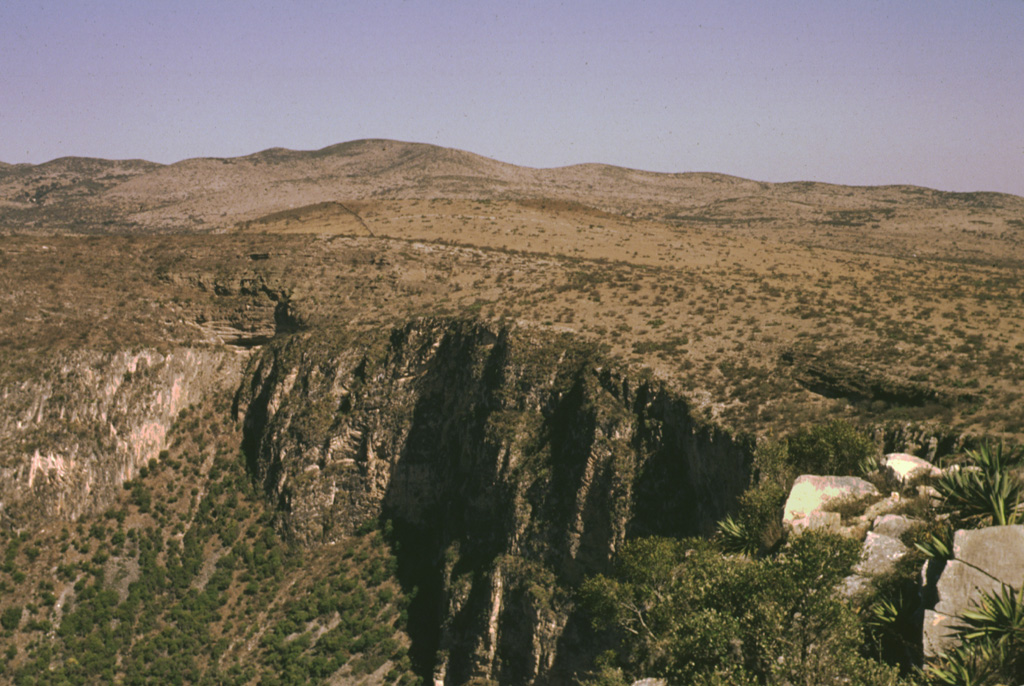Image GVP-07585

The largest and best-known maar of the Ventura volcanic field is Joya Honda. The eastern wall of the 850 x 1100 m wide, 300-m-deep maar is seen here from the south rim. The maar was erupted through Cretaceous limestones, the cliff-forming units in the crater wall, about 1.1 million years ago. The Ventura volcanic field consists of a group of maars and pyroclastic cones located immediately NE of the city of San Luis Potosí in the southern Basin and Range province of central México.
Photo by Jorge Aranda-Gómez, 1994 (Universidad Autónoma de México).
![]() This image is made available under the Creative Commons BY-NC-ND 4.0 license terms.
This image is made available under the Creative Commons BY-NC-ND 4.0 license terms.

Ventura Volcanic Field
